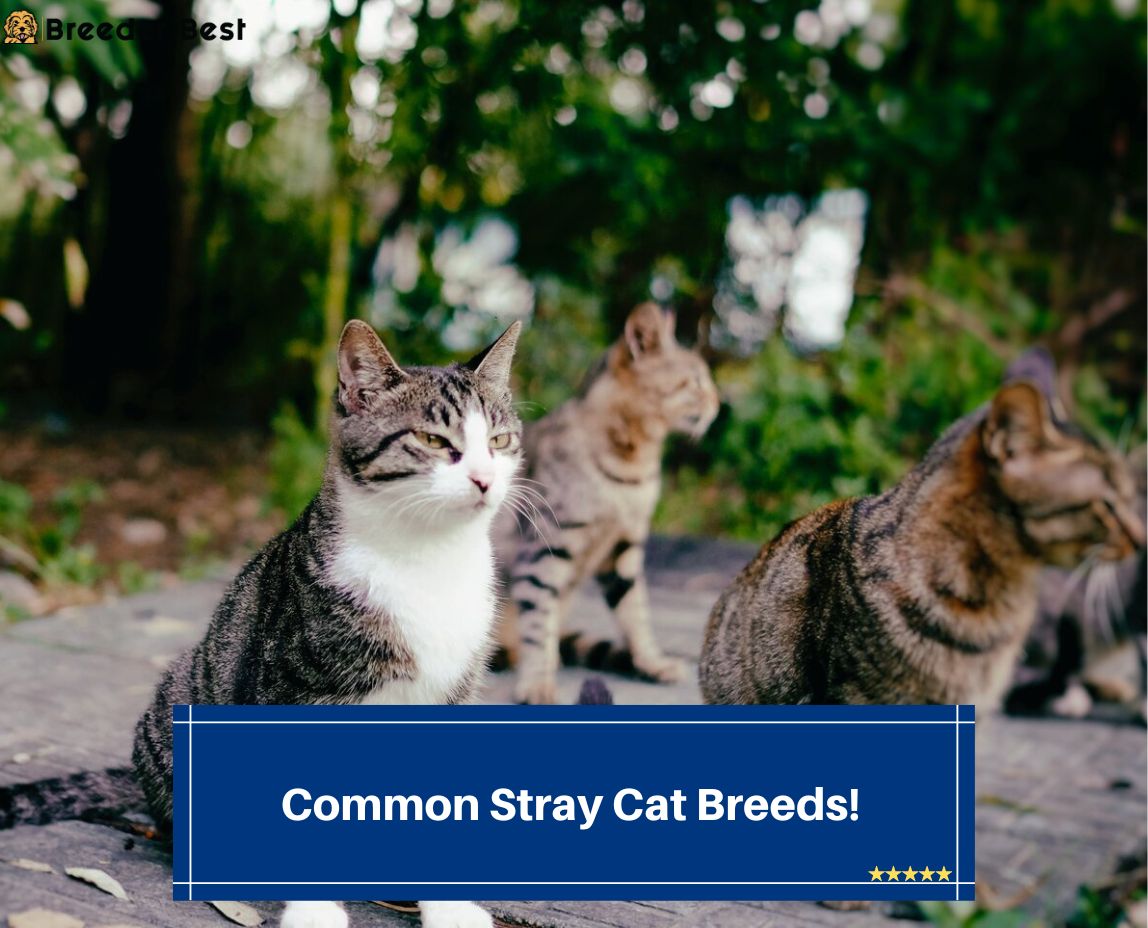More than a quarter of Americans keep feline friends at home, with the total number of domesticated cats reaching just below 60 million. However, up to 100 million cats in the United States live without a place to call home.
The strays scrape by in alleyways, behind businesses, and throughout the suburban wilderness. As stray cats are a frequent sight for city-goers and urban dwellers alike, we will teach you about common stray cat breeds and how to identify them.
Other articles you would like: Are Animal Breeders Bad? and Animal Breeding For Disease. Resistance
What Are The Most Popular Cat Breeds?
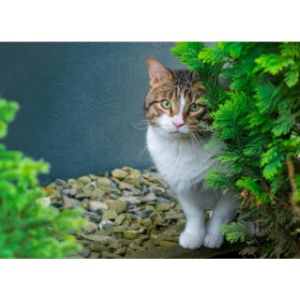
Many cats become strays after running away from their homes and getting lost on the way back. More than 15% of cat owners lose their pets at some point, and less than half make it home within a week. Naturally, the most common cat breeds also largely contribute to the stray population.
The top ten most popular cat breeds include the Domestic Shorthair, the American Shorthair, the Domestic Longhair, the Maine Coon, the Siamese, the Russian Blue, the Ragdoll, the Bengal, the Bombay, and the Persian.
How To Identify Stray Cat Breeds
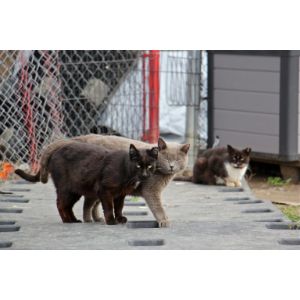
Since the most common breeds have the highest chance of becoming strays, here are descriptions of the most popular cat breeds so you can begin to identify them. An identification cat breeds chart should include the following breeds.
Domestic Shorthair
Making up 95% of all cats, the Domestic Shorthair stray cat breed boasts a limitless variety of patterns and colors. Cat associations do not officially recognize this breed, so there are no definitive standards for appearance.
They typically have short coats and round faces and can be compared to “mutts,” as they don’t strongly resemble a particular breed.
American Shorthair
Recognized by cat registries, American Shorthair cats have a round and compact face look. The cats come in varied colors and often have tabby patterns.
The charm of this breed is its square jaw and soft edges, which give a sturdier appearance compared to the Domestic Shorthair. As a recognized breed, the cats have a pedigree and are intentionally bred.
Domestic Longhair
Domestic Longhair cats are similar to the Domestic Shorthair in that they have no specific color, fur pattern, or genetic makeup. The difference is that they have longer coats. Individual hairs are a couple of inches long and the cats may even sport tufts of fur around their toes and ears.
Maine Coon
A differentiating feature of Maine Coons is their size. It is a recognized breed that tends to be larger than most and has a bulky coat that comes in all colors.
Underneath, these cats have strong and muscular bodies. Maine Coons may even tolerate water, as their dense coats are waterproof.
Siamese
Distinctly elegant features make the Siamese stand out. They tend to have delicate, thin limbs, which complement their sculpted faces. Siamese cats often have deep blue, almond eyes that complement their powdery coat.
The classic coloring for this recognized breed includes a light cream body with grey, brown, or red around their nose, ears, feet, and tail.
Russian Blue
These beautiful blue-grey cats have a short, plush double coat that is typically patternless. Their eyes are usually green and almond-shaped.
Combined with the silvery sheen of their fur, this gives the breed a whimsical and warm look. Russian Blues tend to have more delicate body shapes.
Ragdoll
Fluffy favorites, Ragdolls have full and voluminous coats which require light grooming. Blue eyes are a hallmark of this recognized breed and most of their coat is cream-colored. Like the Siamese, their fur has darker colors around the ears, face, legs, and tail.
Bengal
Bengals are energetic cats and a favorite for their exotic coloring, meant to imitate the coats of big cats like leopards and jaguars. Their unique, short coats hide a muscular frame, and they have large, oval eyes with no standard color. Bengals have sleek, shiny coats and are skinny, but not delicate. Bengals are a recognized breed.
Bombay
Bombay fans love this breed for its panther-like appearance with a similar wildcat charm to the Bengal. The jet-black, short-coat cats are sturdy and muscular.
They are not lightweight or delicate like the Siamese. Bombays carry good weight on their medium frames and have circular, copper eyes. Their round faces give the recognized breed a sweet expression.
Persian
A beloved family breed, the Persians’ signature smooshed faces have captured the hearts of many. It’s hard to miss the Persian’s extremely flat face and short nose, complemented by a luxurious cotton candy-like coat.
They come in a multitude of colors, with both solid and patterned varieties. Blue eyes mark the recognized breed, and their coats require regular grooming.
Other Ways To Tell If a Cat Is a Stray
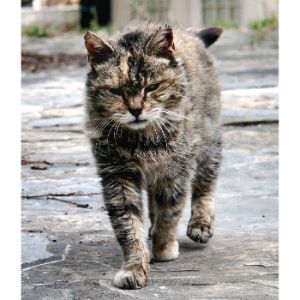
Not all stray cats will fit perfectly into a breed’s description. They might be a mixture of several different breeds, making it hard to determine what they are. Other factors can let you know if a cat is a stray.
Ears
Curbing the feral cat population is vital to preventing the intake and euthanization of cats in shelters. One method of reducing the breeding rate of feral cats is by doing what’s called Trap-Neuter-Return (TNR).
The TNR process gives feral cats immediate medical care and spays or neuters them after trapping. Before being released, shelters will remove the tip of the cat’s left ear. If you see an ear-tipped cat, it is likely a feral or a stray.
Behavior
Truly feral cats will generally avoid or hide from humans. Stray cats are accustomed to people, possibly relying on them for food, and might approach you or others willingly. Stray cats won’t live in colonies like feral cats and can become house pets.
How Can I Help a Stray Cat?
If you are concerned about a local stray and want to take it in, you can try trapping it. Your local shelter will likely have resources or a hotline you can call for assistance.
Trapping includes seeking immediate medical care for any captured animal, usually at an animal shelter. Shelters may also take the animal if you cannot care for it. Other ways to help strays include leaving them food, water, or a makeshift shelter.
Is Purebred Cats Less Likely To Become Strays?
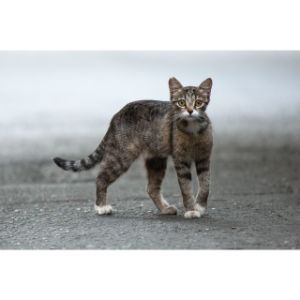
It’s important to note that some of the most popular breeds described are recognized by official cat associations. Purebred cats undergo breeding under strict conditions to maintain their pedigree. While their overall purpose is to be sold or shown, catteries (breeding programs) take pride in caring for and producing offspring.
Since Domestic Shorthairs compose 95% of the cat population in the U.S., you can assume that recognized breeds are less likely to become strays due to their scarcity.
Identifying Fancy Breeds
There are dozens more purebred cat breeds to learn about. Check Purina or the Cat Fanciers’ Association to find out about more fascinating cat breeds!
Where To Find Cat Breeders?
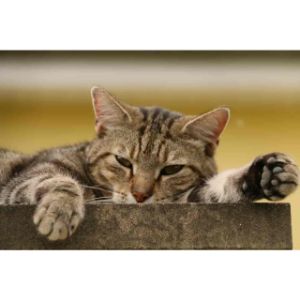
If some of these fancy breeds interest you, then you will have to go to a cat breeder for one. You want to ensure that the animal is healthy, happy, and of the advertised breed. Here are some pointers on finding a breeder.
Breeder Reputation
Cat registries, like The International Cat Association, have resources to help you understand the intake process from breeders and breeder databases. Breeders registered with these organizations follow ethical guidelines to ensure the quality and health of the kittens they breed.
A responsible breeder will be happy to discuss the lineage, traits, and personality of the breed. They should also incorporate proper documentation of the kitten’s vaccinations and health history. The continued health of the animal is fundamental for both breeder and buyer.
Other registries include The Cat Fanciers’ Association, the American Cat Fanciers’ Association, and Fédération Internationale Féline. Some breeders may register with multiple organizations.
Avoid Scammers
Note that not all advertisements come from legitimate breeders. In the age of the internet, you need to know how to spot a scam. Common factors in a scam include a seller who avoids phone contact, asks you to wire money or pay with gift cards, and rushes you to buy the animal without time to consider.
If the risk of online shopping is intimidating, you can find breeders the old-fashioned way: attending local cat shows. Registries provide calendars with upcoming events, where you can see the animals in person and ask breeders questions. Only breeders or individuals who register with the association may show their cats.
What If I Can’t Afford a Purebred Cat?
Purebred kittens can easily cost more than $2,000 because they require extensive practice to maintain the lineage and health of the animal. If purchasing a purebred cat isn’t in your budget, consider alternative methods to bringing home a new loved one!
Adopting a Cat from a Shelter
Over 3 million cats enter animal shelters every year, including strays, feral cats, and escaped family pets. The demand for pedigree cats fuels the practice of kitten mills and unethical breeding, contributing to these numbers.
Similar to breed-specific dog rescues, some organizations specifically rescue and rehome pedigree cats, like Specialty Purebred Cat Rescue.
Conclusion For Common Stray Cat Breeds
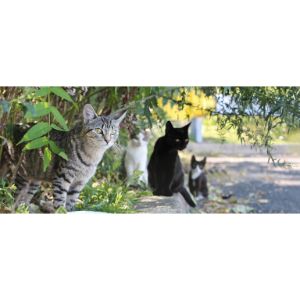
Now that you know the common stray cat breeds and how to identify them, you’ll likely be able to take care of strays in your neighborhood and offer them a loving home. Take precautions if you’re looking to buy or adopt a kitten.
Stray cats make for wonderful companions and deserve your attention and love.
You will also like:
For more information about common Stray Cats, check out the video below:

